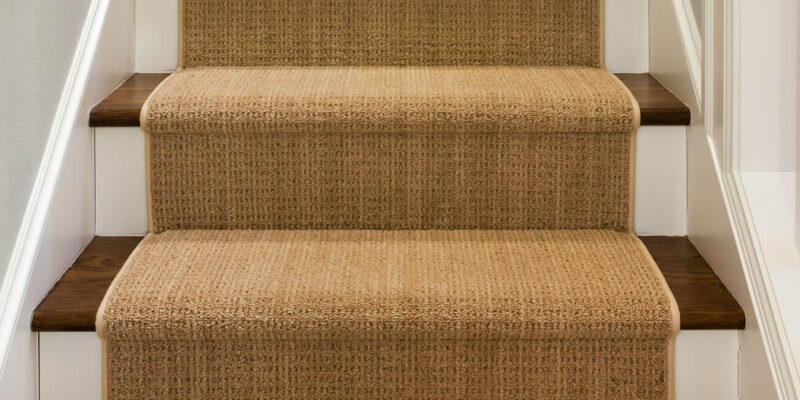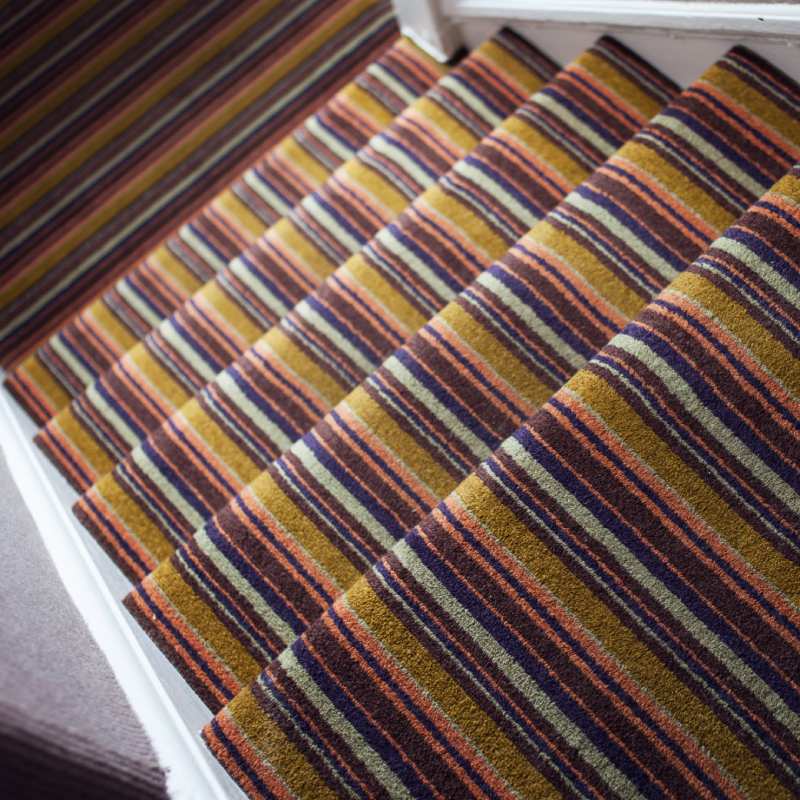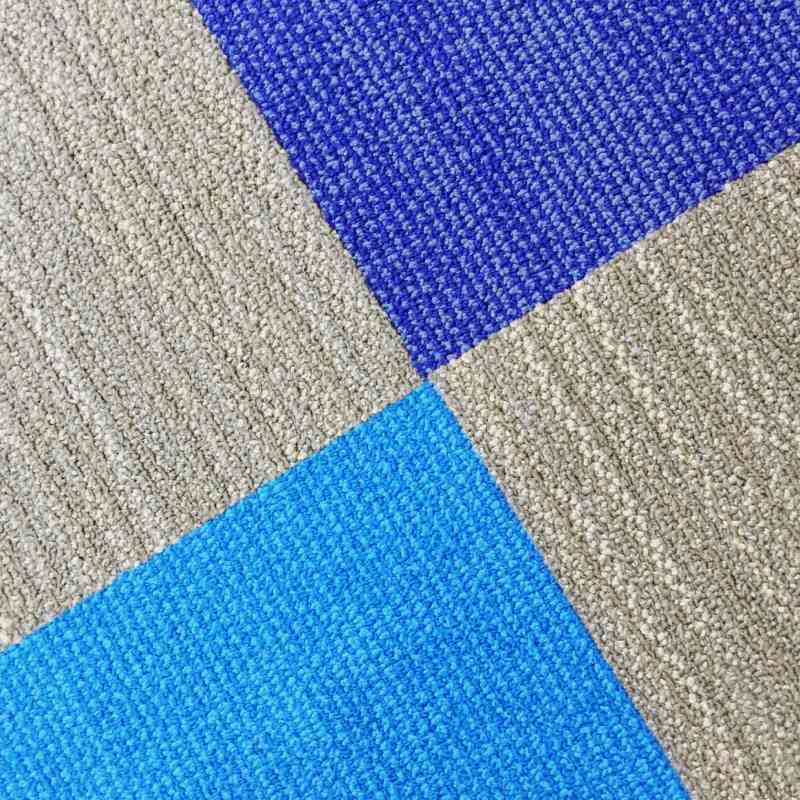What Are the Different Types of Carpet? – Everything You Need to Know
Are you a carpet lover? Or are you just considering this type of flooring for the first time? Either way, you must know that carpets can be great. They can tie up a room nicely, matching the furniture and showing off your style, or they can give you a nice, soft spot in the house to curl up on the floor.
However, when choosing a carpet, you must look further than aesthetics and feel. All of a sudden, you find yourself bombarded by options. Different materials, types of backing, and how do you know what is quality and what is not?
We understand how hard it is to find the right one for you, and that’s why we’ve compiled a guide on everything you need to know about buying a carpet in this quick and easy read.

How Do You Know Which Type of Carpet is Best for You?
Before you head off to a shop, you need to know what to look out for when buying a carpet to make the right choice. The crucial factors to note when looking for a carpet are:
Face Weight
This is the weight per square yard of the carpet’s fibres. This weight does not include the weight of the carpet’s backing. A carpet with heavier face weight will not flatten easily, even when placed in an open area where it gets stepped on a lot. Heavy face weight equals high durability, so 40 to 60 ounces of face weight is best for carpets in high-traffic areas.
Pile Height
This refers to the length of the fibres on a carpet. A low pile carpet has short fibres, barely a quarter-inch long, a flat look, and a coarse feel. It’s durable and easy to clean, making it suitable for high-traffic areas or places with pets.
A medium pile carpet has fibres ranging in length from a quarter inch to half an inch. It’s softer to the touch and moderately durable.
High-pile carpets have fibres ranging from half an inch to three-quarters of an inch in length. These carpets are plush and opulent, giving a luxurious feel to the room. They’re very warm and can muffle footsteps, but they can be hard to clean.
Stain Resistance
This is most important for buyers with children or pets and those who expect messes more often. If you get a carpet prone to stains, that’s just a recipe for disaster.
Most carpets get stain-resistance treatment so that they can at least have a fighting chance. However, some materials like nylon, polyester, and wool do a better job than others.
Pile Density and Twist Level
The density of the pile refers to how much fibre is in a cubic yard of the carpet. It’s also how close the individual tufts or loops are to each other. Higher density means a thicker carpet with tightly packed fibres, making it more durable.
The twist level refers to how many twists are in each fibre strand. For example, the more twists in the strands of a carpet, the more durable the carpet is. This is because looser twists can unravel.
Understanding Carpets and Carpet Materials
One important thing to note when buying a carpet is the kind of material (fibre) used in making it. The kind of fibre used in a carpet affects many things, from durability to maintenance. If you buy a carpet with a material you don’t like, you will end up hating it no matter how nice it looks.
Carpet materials can either be natural or artificial. Carpets made out of natural materials are the best in terms of quality. They’re durable and can stay gorgeous for decades. As such, they are more expensive.
On the other hand, carpets with artificial materials are more affordable, stain resistant, and easier to customise in colours. But, unfortunately, they don’t last as long and are less eco-friendly.
The natural carpet materials are:
- Sisal: This offers a simple yet chic look, perfect for the minimalist who values texture over colours bolder than its natural creamy beige. It also happens to be a hit in carpet trends right now.
- Wool: It is the most popularly used for good reason, being soft yet durable and luxurious yet easy to maintain. It fits right into almost any room and any style.
The artificial carpet materials are:
- Nylon: Its durability is great for a man-made material as it doesn’t succumb easily, even when used in high-traffic areas. It is more affordable than wool and offers a similar look.
- Olefin (Polypropylene): It shines for stain resistance, and it's very affordable. Unfortunately, it doesn’t hold up well in high-traffic areas, and it can even melt in direct sunlight.
- Triexta: It’s a rather new type of synthetic fibre that is partly made out of corn, making it sustainable. It is stain resistant and easy to maintain, but it is three times denser than other materials. This makes it hard to vacuum since the fibres are too fine.

Elements to Look Out for in a Good Carpet
A carpet, like everything else, is made up of different parts. When those parts are good, it creates a great carpet. If you pick a carpet without considering the elements that are best for you, it will only be a wasted purchase.
There are four main elements to look out for when buying a good carpet. They are:
- Fibre
- Pile
- Grade
- Backing
Carpet Fibres and Types of Carpet Fibres
The fibre of a carpet refers to the material on the surface of the carpet which you step on. Fibres are strands of material attached to the face of the carpet, creating the surface. Fibres can be twisted, cut, or looped and made out of synthetic or natural material.
Carpet fibres can be divided into two:
- Natural fibre: These are made out of natural materials like wool, cotton, and sisal. Carpets made out of natural fibre typically last the longest and are more expensive and luxurious.
- Synthetic fibre: These are made out of artificial materials such as nylon, polyester, triexta, and olefin. Carpets made with synthetic material are cheaper and don’t last as long, but they can be more colourful.
Carpet Piles and Types of Carpet Piles
The pile of a carpet refers to the way that the fibres are arranged on that carpet. It affects the way your carpet looks, as well as how long it lasts.
The three main types of carpet piles are:
- Cut pile: This is when the fibre is cut at a certain height, and then twisted into tufts. The height can vary in length. Plush carpets with short, evenly cut, smooth piles fall under this category. Saxony and frieze carpets are also cut piles with longer fibres and a tighter twist.
- Loop pile: This is when the fibre is bent and connected on each end to the backing, creating loops instead of tufts. An example is Berber carpets with their dense loops made of uncut fibres instead of individually looped ones. High-low loop carpets are also loop pile carpets with loops of different heights used to create patterns on them.
- Cut and Loop Pile: This type of pile is a mixture of cut and loop piles. It creates a clear design and a difference in texture on a carpet, making it amazing for bold aesthetics.
Carpet Grade and Types of Carpet Grade
The grade of a carpet refers to its quality. A carpet’s grade depends on things such as the face weight, the type of fibre used, and how well it was put together. A higher-grade carpet will last longer, so you should consider the grade before making a purchase.
Carpet grades come in three types:
- Low-Grade Carpet: These are lightweight and cheap, with a life expectancy of three to five years.
- Medium Grade Carpet: These are heavier and twice as expensive as low grades. They last six to twelve years.
- High-Grade Carpet: These carpets are the heaviest and longest-lasting. They can cost up to three times the price of a medium grade, but they last 12 to 20 years.
Carpet Backing
The backing of a carpet is simply the back of the carpet, also referred to as padding. The carpet backing has two parts: the primary backing, where the surface fibre of the carpet is placed, and the secondary backing, which is the part touching the floor.
Padding is the insulation of the carpet, helping muffle footsteps and protecting the fibre. It also makes the carpet comfortable to walk on.
Some material backing can be made out of are:
- Polyurethane: It’s an affordable and durable resin material with great moisture resistance. However, it’s rough and can damage floorboards with its hard, rubber-like texture.
- Soft Plastic: It’s gentle on floors, but although it’s made out of woven plastic, it doesn’t do well with moisture.
- Jute: It’s made from the natural fibre of the jute plant, and it’s quite durable. However, it’s a bit scarce.
Carpet FAQ’s
Do I Need Underlay or Anything Else to Lay a Carpet?
An underlay acts like a foundation for your carpet and affects how it feels under your feet. It will also make your carpet last longer. Of course, an underlay isn’t necessary, but it’s certainly a great addition to your comfort.
How Do I Care For My Carpet?
You can take care of your carpets and make them last longer by:
- Vacuuming regularly
- Never pulling at loose tufts of loops
- Using furniture cups
- Moving furniture around regularly so as not to create permanent groves in the carpet
- Keeping out of direct sunlight
- Keeping pets’ nails trimmed
- Using doormats or taking off shoes when getting on carpets
- Never rubbing stains
Which Types of Carpet to Lay in Which Rooms?
You can use your carpets anywhere you like; however, you might want to consider which rooms are more suited to carpet than others.
Bathrooms and kitchens are usually carpet-free due to exposure to water and spillage that will dirty and ruin the carpets. As such, it’s best to leave them out of those rooms.
What Is the Best Carpet Material for Pets?
Pets can rip carpets with their claws or even hurt themselves if their nails get caught in the carpet. As such, nylon and polypropylene are great for areas with pet traffic. They’re durable, don’t stain easily, and don’t ignite as much of an urge to scratch.
Conclusion
You can save yourself the confusion and trouble involved in carpet shopping by learning all you need to know first. Finding a carpet that works best for you doesn't have to be hard. Take our carpet advice and decorate your floors today!






